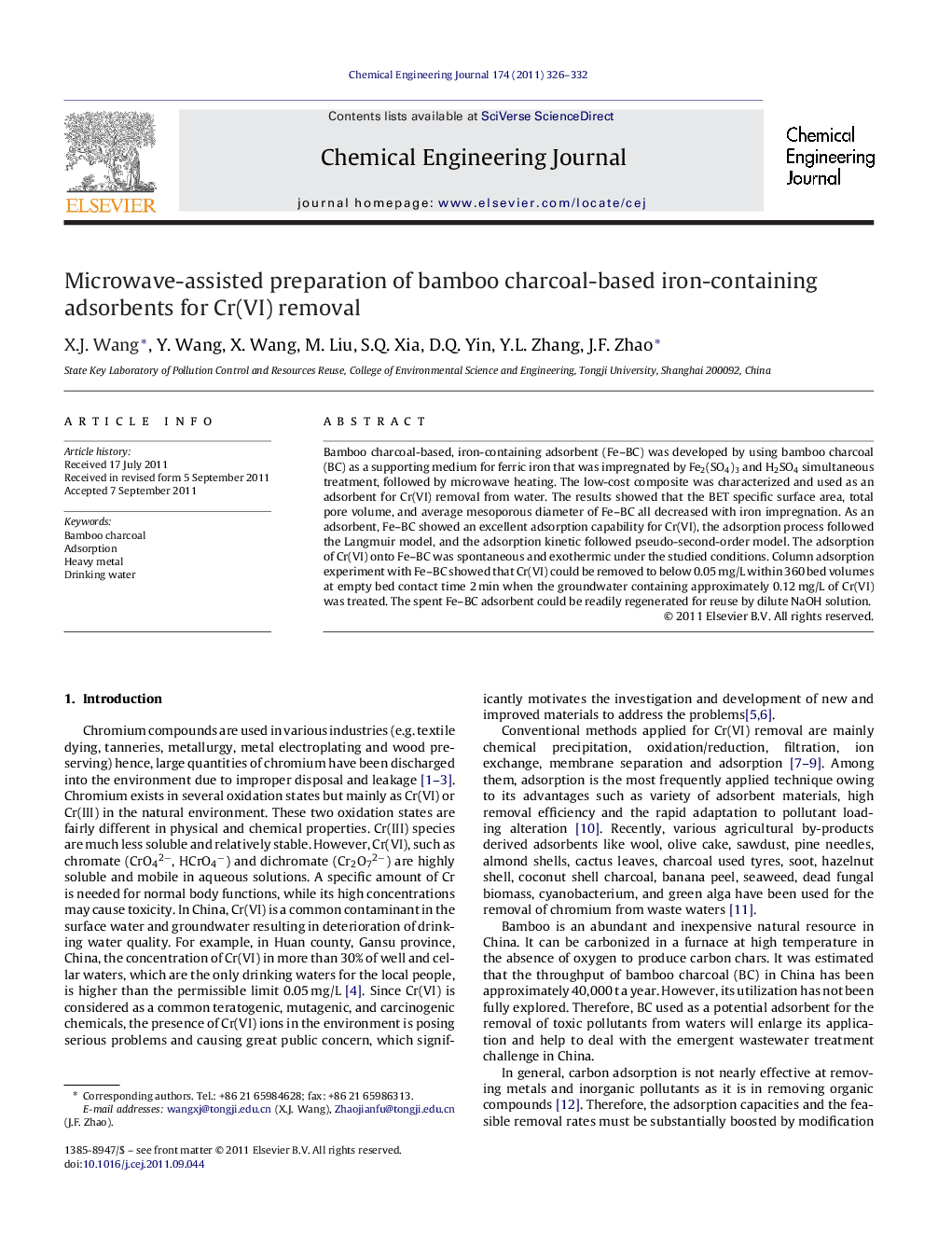| Article ID | Journal | Published Year | Pages | File Type |
|---|---|---|---|---|
| 150539 | Chemical Engineering Journal | 2011 | 7 Pages |
Bamboo charcoal-based, iron-containing adsorbent (Fe–BC) was developed by using bamboo charcoal (BC) as a supporting medium for ferric iron that was impregnated by Fe2(SO4)3 and H2SO4 simultaneous treatment, followed by microwave heating. The low-cost composite was characterized and used as an adsorbent for Cr(VI) removal from water. The results showed that the BET specific surface area, total pore volume, and average mesoporous diameter of Fe–BC all decreased with iron impregnation. As an adsorbent, Fe–BC showed an excellent adsorption capability for Cr(VI), the adsorption process followed the Langmuir model, and the adsorption kinetic followed pseudo-second-order model. The adsorption of Cr(VI) onto Fe–BC was spontaneous and exothermic under the studied conditions. Column adsorption experiment with Fe–BC showed that Cr(VI) could be removed to below 0.05 mg/L within 360 bed volumes at empty bed contact time 2 min when the groundwater containing approximately 0.12 mg/L of Cr(VI) was treated. The spent Fe–BC adsorbent could be readily regenerated for reuse by dilute NaOH solution.
► A novel process for the preparation of iron-containing bamboo charcoal (Fe–BC) is developed. ► The presence of iron significantly affects the surface area and pore structure of the Fe–BC. ► Fe–BC has a higher degree of affinity toward Cr(VI) duo to its iron oxide functional groups. ► Fe–BC is a useful adsorbent for Cr(VI) and can be used in fixed-bed filtration tower. ► The spent Fe–BC can be readily regenerated for reuse by dilute NaOH solution.
